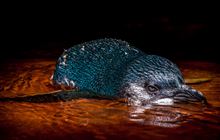Shorebirds breeding on Manawatu rivers
Archived content: This media release was accurate on the date of publication.
Introduction
Shorebirds are often seen on estuaries in late summer, but in early spring many move inland to raise their families on our riverbeds.Date: 21 September 2016
Sue Moore, Senior Ranger Biodiversity for DOC’s Manawatu District, says local shorebirds such as banded dotterel and pied stilts will be seeking out nesting spots on rivers in the Rangitikei, Manawatu and Horowhenua.
“They have introduced predators, floods, and weeds encroaching on their nest sites to contend with,” says Ms Moore. “It would be nice if there was a bit less disturbance from people and dogs.”
“The eggs of dotterels are typically pretty cryptic to protect them from aerial predators like harriers – but it is not so handy when people step on them or drive over them accidentally,” says Ms Moore.
Although nests can be really hard to spot, dotterels will often leave their nest and fake an injury to divert unwanted attention from the eggs or chicks. “If you see a dotterel squawking and dragging its wing, there is a good chance it has a nest nearby so give it a wide berth,” advises Ms Moore.
Tuturiwhatu or banded dotterel (Charadrius bicinctus) are a threatened species that breed only in New Zealand (but some holiday in Australia in the non-breeding season). They have a narrow black band on the neck and a wide chestnut band on the breast during the breeding season. Eggs are laid from August to early November in shallow scrapes lined with pebbles. They almost always produce three eggs, which are usually grey-green with small dark spots.
Poaka or pied stilts (Himantopus himantopus) will also fake injuries to draw predators away from their nests. If this doesn’t work, they have been known to ‘dive-bomb’ intruders, swooping down from the air at great speed and making lots of noise to intimidate the enemy. These graceful black and white birds nest on the ground near water, usually in groups. They were quite common in New Zealand but their numbers are declining.
Limiting disturbance to shorebirds
Here are a few tips for things you can do to limit disturbance and ensure you get to see our shorebirds in action for years to come:
- keep noise to a minimum and don’t get too close. If you are still and quiet, you will get to see a lot more of their natural behaviour
- keep to marked tracks and paths wherever possible
- keep dogs on a leash – even well trained dogs can scare or injure birds
- never dump garden waste or rubbish.

